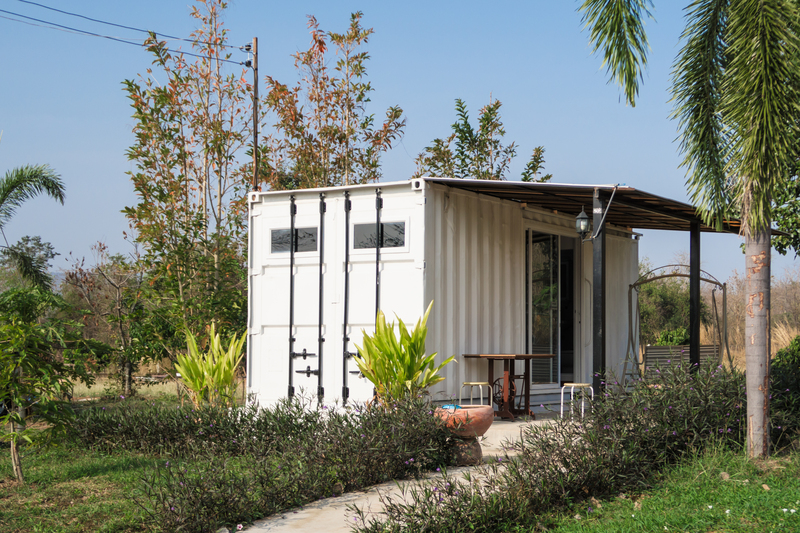Eco-Friendly Solutions for Manufacturing Waste Reduction
The manufacturing sector has long been under scrutiny for its environmental impact, especially when it comes to waste production. However, with the increasing demand from consumers and regulatory bodies to adopt sustainable practices, many industries are exploring eco-friendly solutions for manufacturing waste reduction. This effort not only helps in conserving the environment but also often results in cost savings and improved operational efficiency. In this article, we will explore innovative strategies and practices that contribute to more sustainable manufacturing processes.
Understanding Manufacturing Waste
Before delving into the solutions, it's essential to understand what constitutes manufacturing waste. Generally, this refers to any unwanted material that is produced during manufacturing processes. Some common types include:
- Scrap material: These are the leftover pieces from production that can't be reused in their current form.
- Defective products: Items that do not meet quality standards and are thus discarded.
- Packaging waste: Excessive packaging materials that contribute to overall waste.
- Hazardous waste: By-products that are potentially harmful to the environment and human health.
- Overproduction: Producing more than needed, leading to unsold inventory.

Innovative Eco-Friendly Solutions
Circular Economy Practices
One of the most effective approaches to reduce manufacturing waste is embracing the circular economy model. Unlike the traditional linear economy that follows the 'take, make, dispose' pattern, the circular economy focuses on reusing and recycling materials. Implementing circular economy practices can drastically reduce waste. For instance:
- Product redesign to make materials easier to dismantle and recycle.
- Remanufacturing processes that restore used products to like-new conditions.
- Recycling initiatives that recover valuable materials from waste.
Lean Manufacturing
Lean manufacturing is another proven way to minimize waste. Originating from the Japanese automotive industry, it emphasizes eliminating waste from all processes and improving overall efficiency. Key principles include:
- Just-in-time (JIT) production to reduce overproduction and inventory costs.
- Kaizen, or continuous improvement practices, focused on reducing waste.
- 5S methodology for workplace organization, which systematically targets waste, particularly in motion and inventory.
Biodegradable Materials
Choosing biodegradable materials can significantly cut down on environmental pollution. These materials break down naturally and reduce the strain on landfills. Examples include:
- Bioplastics made from plant-based sources, reducing dependency on petroleum-based plastics.
- Organic fabrics for textile manufacturing, such as cotton, hemp, and bamboo.
Efficient Resource Utilization
Effective use of resources is essential for eco-friendly manufacturing. This involves:
- Energy-efficient machinery to reduce carbon footprints and operational costs.
- Installation of water recycling systems to minimize water waste.
- Utilizing renewable energy sources like solar and wind power for factory operations.
Supplier Collaboration
Collaborating with suppliers committed to sustainability ensures the entire supply chain contributes to reducing waste. This involves:
- Prioritizing suppliers with sustainable credentials.
- Establishing eco-friendly packaging solutions to decrease packing waste.
- Partnering on take-back programs for products at the end of their lifecycle.
Waste-to-Resource Innovations
Exploring waste-to-resource technologies can transform waste materials into valuable resources:
- Composting non-hazardous organic waste into valuable soil additives.
- Upcycling waste materials into new products, like using textile scraps for insulation.
- Converting waste gases into energy or chemicals using cutting-edge technology.

Benefits of Manufacturing Waste Reduction
An effective waste reduction strategy not only benefits the environment but also enhances the business's reputation and profitability:
- Cost Savings: Reducing waste lowers disposal costs and can decrease material and resource spending.
- Improved Efficiency: Leaner operations mean faster production times and reduced inventory levels.
- Enhanced Brand Image: Demonstrating commitment to sustainability resonates well with today's eco-conscious consumers.
- Regulatory Compliance: Staying ahead of environmental regulations can avoid penalties and ensure smoother operations.
Conclusion
Incorporating eco-friendly solutions for manufacturing waste reduction is not just an environmental responsibility but a strategic business decision. By adopting sustainable practices, companies can materially reduce their environmental impact while improving their bottom line and enhancing their brand reputation. Embrace these emerging methods today and be part of the movement toward a cleaner, more sustainable future.
For manufacturers, the road towards sustainability may seem daunting, but with the innovative solutions discussed, achieving significant waste reduction is within reach. As awareness and technology evolve, more opportunities will arise for businesses to integrate eco-friendly practices into their core operations, paving the way for a resilient and sustainable industrial sector.